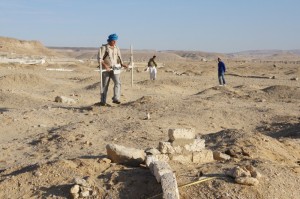
Spring Survey Week One – Day Four
Reblogged from Basing House CAT Project:
Today was a cold but very productive day up at Basing House.
The student teams are getting faster at recording topography and have covered huge areas of the site.
Surveying in the limits of the New House has been tricky as there are partial walls to try to identify.
One of the student teams is made up of Masters students, two of whom are planning to use Basing House as the major case study for their dissertation projects.
Continue reading →



